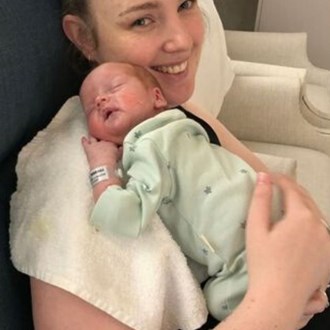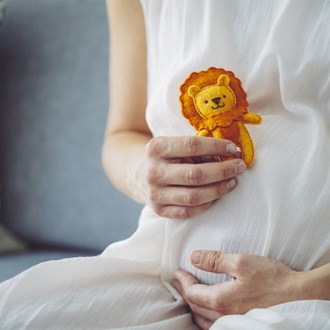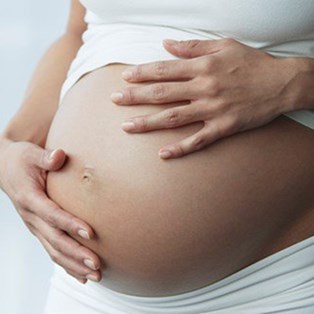When to go to hospital in labour: contractions timings?

Your guide
By Alex Harmon
February 12 2019
At the tail end of your pregnancy, every bump, twitch, flow, and pain, can make you think, is this labour? Followed quickly by, should I go to the hospital?
Knowing when labour has established can be the difference between an annoying trip to the hospital only to be told you should go home – or arriving too late which can be frightening for everyone.
The first stage of labour comes with a few important signals, although they can be different in succession and obviousness for all women. These signs include your waters breaking, the start of contractions, and what is known as ‘a show’.
Contractions timings
Timing your contractions can help you understand when the best time to go to hospital is. You may already be familiar with contractions, which is your womb getting tighter and relaxing, in preparation for birth, particularly if you’ve experienced Braxton Hicks contractions.
Your contractions will tell you when to go to hospital, and a sure sign that labour is commencing is when you have regular, painful contractions that last for more than 30 seconds. This is often accompanied by back pain as well as pain in your upper and lower abdomen.
How close should contractions be before going to hospital?
Most doctors and midwives will tell you to wait until contractions become more frequent. They suggest a transfer to hospital when your contractions are five minutes apart and lasting 60 seconds and have been going on for an hour. This is an indication that true or ‘active’ labour has begun.

Getty images
A bloody ‘show’
In the early stages of labour the brown mucus plug in your cervix will be released and with it comes a small amount of sticky, jelly-like mucus. This ‘show’ can be a brown or pink colour as it’s a mix of blood and mucus. This doesn’t mean it’s necessarily time to grab your packed bag and go, a show is an indication that the cervix is starting to open. It can be 24 hours, days or even weeks before labour truly kicks in. Speak to your hospital before you get in the car and go. Bear in mind that not all women will have a show, or any kind of discharge, before labour.
Waters breaking
Just like in the movies, your waters suddenly breaking is a sign that labour is here. However, unlike the movies, some women will only experience a tiny trickle of fluids. Whether it’s a sudden gush or a slow leak, these waters should be clear or slightly pink in colour. Not all women will experience this, in fact, some will have their waters artificially broken at the hospital, so if you’re having contractions, don’t wait for your waters to break.

Getty images
When to go to hospital in labour with your second baby
That’s right, there can be a difference in labour with your first and second baby, and it’s not just your state of mind. In general your second labour will progress faster and won’t require quite as much pushing (great news!). It is also common for women having their second baby to go into labour sooner, often before their due date, so be prepared.
What to do if you are unsure?
There are some factors that will mean erring on the side of caution. If you start experiencing labour symptoms, most hospitals recommend you make your way in if:
• You live far away from the hospital
• You are pregnant with multiples
• You have an existing medical condition
• You’re feeling anxious or uncomfortable at home
If you’re still unsure, call the hospital and they can talk it through with you and help you decide.

Getty images
Research suggests that women will have a more positive labour if they stay at home during the early stages. Remember labour can go on for a while, so make sure you’re comfortable, try to move about, keep hydrated and load up on snacks – giving birth can be harder than running a marathon!













